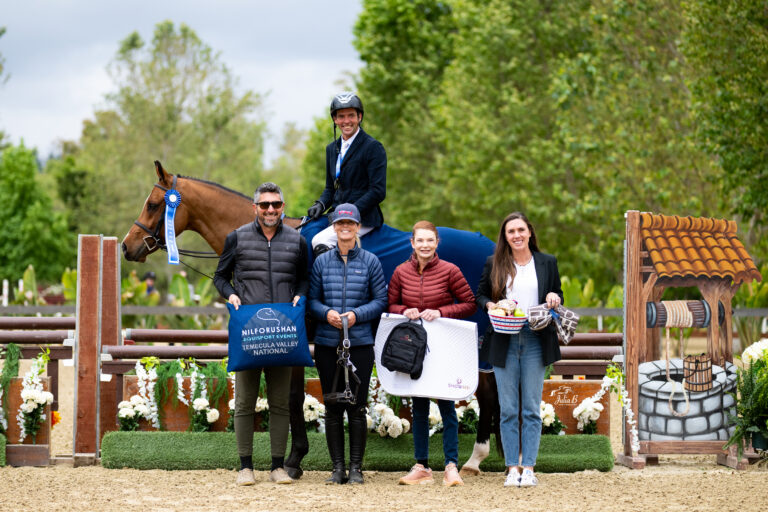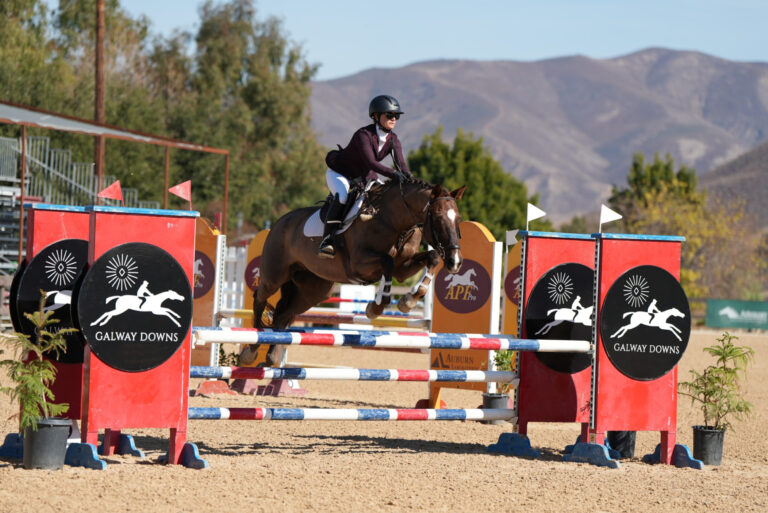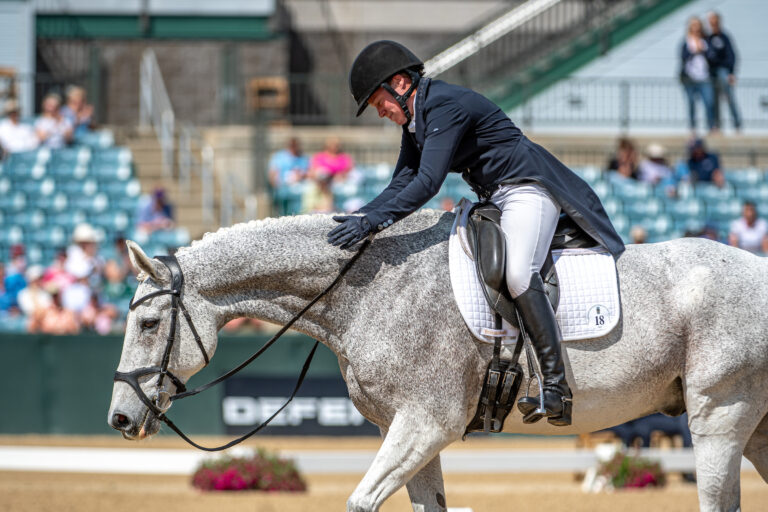
Between 2000 and 2015, Las Vegas was the only U.S. city to host the FEI World Cup™ Finals, staging them six times. A seventh Vegas Finals is scheduled for a new venue in 2020, but this year, center stage belongs to Omaha, Nebraska, and the Midwestern city is making the most of it.
Omaha will host both the Longines FEI World Cup™ Jumping and the FEI World Cup™ Dressage Finals 2017, March 29–April 2. The two competitions are expected to bring about 70 of the world’s best human and equine athletes, representing at least 25 countries, to Omaha’s CenturyLink Center.
Many riders and spectators will be making their first trip to the city for the Finals and they should be pleasantly surprised with the variety of restaurants, sightseeing options and things to do. At the show there will be attractions other than riding, including Chip Davis and his multi-platinum-selling group Mannheim Steamroller as the opening act on Saturday night when jumpers who either aren’t participating in the World Cup™ or didn’t qualify for the final day have their own class.
An Opportunity for Growth
Omaha organizers staging such a prestigious event is a valuable means to building up the standard of show jumping and dressage in the Midwest while growing the disciplines.
“The legacy is bringing the elite into Omaha and showing the grassroots what the ultimate goal can be, if that’s what you want, where Vegas is about putting on a show. It’s kind of a different model,” said Will Connell, the U.S. Equestrian Federation’s director of sport.
He noted that Vegas has a transient spectator base, while Omaha will be appealing more to a local and regional constituency with the priority of “doing what’s right for Nebraska and Iowa” (the state line is just a few miles from the CenturyLink Center) as well as the surrounding region.
“The mission is different,” said Will. “For Omaha, they are trying to get their local population to get there. That in itself will have a very good legacy. There is a very active show-jumping community around Omaha, albeit not at the five-star level. What we hope we will see from Omaha is that it will develop into a kind of feeder base for that five-star level.
“What we’re trying to work with them is to provide a linkage between [riders jumping] 1.20, 1.30 or 1.40 meter [heights] or whatever it might be with regional key competitions,” Will continued. “The next step is the jump up to 1.50 or 1.60 meters so that you have a healthy regional show-jumping circuit but which has a vision for people who want to go on and become international show jumpers.”
Educating Fans
Lisa Roskens, an amateur-owner show jumper who came up with the idea of bidding for the Finals in Omaha, believes the competition has ‘’the potential to be a catalyst for the sport in our area. We have a very strong grassroots base of horsemen, but because the big competitions are so far away, we tend to get stuck in a bit of a rut.
‘’It is difficult to imagine yourself doing something nobody around you does and you never get to see. By bringing the best in the world to town, we will shine a light on what is possible,’’ said Lisa, who chairs the Omaha Equestrian Foundation, which is presenting the Finals.
‘’With educational programs and robust plans for life after 2017, we very much want to light a spark in people to do more and create opportunities for growth beyond just what we at the Omaha Equestrian Foundation can do,” she explained. The Foundation will continue to hold and grow the annual International Omaha show each spring.
Indeed, a big part of the program at the CenturyLink Center will be education, from introducing various breeds to programs teaching children and others about caring for horses.
As Will observed, “It’s all about exposing people to the enjoyment of equestrian sport, not just jumping.”
A Star-Studded Field
Although at press time it was uncertain who would be competing in Omaha with qualifying going down to the wire, there is no doubt that the lineup will be high-powered and certainly more so than last year in Sweden. Prior to the Rio Olympics, such important U.S. show jumpers as McLain Ward and Kent Farrington never planned to go to the 2016 Final, and some of their counterparts from elsewhere in the world were on the identical page. The situation was similar in dressage. But 2017 is a different story.
“Really, this year, the [Longines FEI] World Cup™ can be a far bigger target than last year when the Olympics were the target,” said Will, noting that for the American show jumpers, the World Cup™ and the Nations Cup Finals are the two big goals of 2017. Europeans also have the European Championships, which are held during years that don’t offer a world championships or Olympics.
New Date Brings New
Challenges
The Omaha event has been moved to earlier in the spring than it was for Vegas. It will be a climax of the indoor season for the Europeans, who will then begin competing outdoors a few weeks later when they return home.
Three-time World Cup™ winner Meredith Michaels-Beerbaum commented that in her view, competing indoors before the Final is a key to doing well there, as opposed to coming in from a big outdoor grand-prix arena, like those in Florida and California, as so many North American-based riders do.
With the date change, the Final bumps up against the Winter Equestrian Festival in Wellington, Florida, coinciding with the last week of competition there. It’s also just after the $500,000 five-star grand prix in Wellington, which has been moved a week earlier but still is too close to the Final for some riders’ comfort.
“They could have kept it two or three weeks before the first of May and let us get through our big circuits here,” former U.S. coach George Morris commented. “I’m not crazy about that decision. I don’t like having to choose with a top horse whether I do the final grand prix in Wellington or go to Omaha. That’s not considerate of our hemisphere.”
But it’s also an example of how crowded the calendar has become, with a smorgasbord of big-money classes year-round, which is far different than the situation when the World Cup™ began and major grands prix were few and far between. Still, the indoor championship retains its shine. People may not remember who won the grand prix during the sixth week of a show series, but they won’t forget who won the World Cup™ that year.
Melanie Smith Taylor, the 1982 winner, remembered that the early years of the World Cup™ were groundbreaking. “It was the only time that Americans got to go to Europe and show. People didn’t do their own tours like they do now.”
A Unique Championship
The World Cup™ is entirely an individual championship, unlike the World Equestrian Games, the Pan American Games and Olympics, each of which has a team component. So although times have changed, it remains unique.
“It’s a championship you have to qualify for, but it doesn’t matter what country you ride for,” said Meredith. “You do not need to be selected by a chef d’équipe. It’s fair and equal, the qualification system, so getting to the Final is a fair and equal process. I personally felt it was a very accurate championship to decide who the best horse and rider pair was at the time.”
As Will noted, “To many, winning the Longines FEI World Cup™ Jumping Final is still a target. It’s quite an accomplishment for an athlete to be able to come out on top after five rounds of jumping.”
Saturday Night Fun
Saturday night at the FEI World Cup™ Finals Omaha 2017 has been a challenge for U.S. organizers ever since the dressage freestyle that used to dominate the evening was moved to the afternoon to suit the timing of European TV.
In Omaha, however, the evening’s feature will be quite special. It’s the International Omaha Grand Prix, with an impressive $130,000 in prize money and a maximum of 30 starters. Although the field will include some who didn’t make the third round of the World Cup™ that will be held the following day, this is no consolation class.
Other riders in the order will be a few who didn’t qualify for the Finals and a number for whom the class itself, also laid out by designer Alan Wade, is a big deal. Expect to see participants who have supported the International Omaha show in the past, such as Matt Cyphert and Erin Heineking, taking part in the competition, which likely will be a strong 1.50-meter effort with perhaps a few fences at 1.60 meters.
Lisa Roskens issued an invitation for former World Cup™ winners to come to Omaha, so you may see at least one of them in the grand prix, too.
For more on the Finals, accomodations and tickets, go to www.omahaworld
cup2017.com or call (402) 930-3079.
For coverage leading up to and including the Longines FEI World Cup™ Jumping Final, go to www.practicalhorsemanmag.com/news/world-cup. For similar coverage of the FEI World Cup™ Dressage Final, go to www.dressagetoday.com/news/world-cup.











